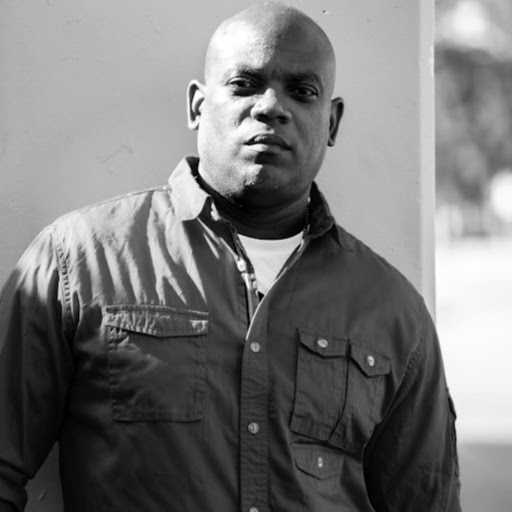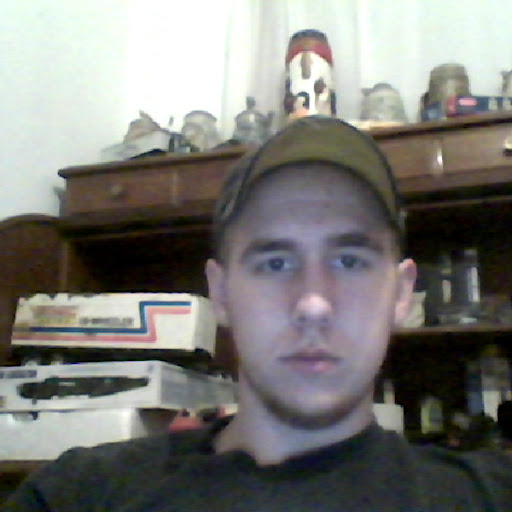Albert J Rose
Deceased
from Flemington, NJ
- Also known as:
-
- Albert J R Se
- Jonathan A Rose
- Dc Childrens Rose Albert
- Phone and address:
-
110 Hoffman Rd, Flemington, NJ 08822
(908)7884993
Albert Rose Phones & Addresses
- 110 Hoffman Rd, Flemington, NJ 08822 • (908)7884993
- 615 Sherwood Pkwy, Mountainside, NJ 07092 • (908)2334774
- Westfield, NJ
- Harrison, NJ
Work
-
Company:Lewis Rice LLC
-
Address:
Specialities
Estate Planning • Partnership • Corporate & Incorporation • Power Of Attorney • Limited Liability Company (LLC) • Trusts • Wills & Living Wills • Family Wealth Transfer • Federal and State Income, Estate and Gift Taxation • Business Law • Probate • Trusts and Estates Planning
Isbn (Books And Publications)

Historic American Roads: From Frontier Trails to Superhighways
view sourceAuthor
Albert C. Rose
ISBN #
0517525232

Historic American Roads: From Frontier Trails to Superhighways
view sourceAuthor
Albert C. Rose
ISBN #
0517525496


Governing Metropolitan Toronto: A Social and Political Analysis, 1953-1971
view sourceAuthor
Albert Rose
ISBN #
0520020413


License Records
Albert J Rose
Address:
Mountainside, NJ
License #:
38MC00122200 - Expired
Category:
Chiropractic Examiners
Issued Date:
Aug 11, 1967
Expiration Date:
Aug 31, 2009
Type:
Chiropractor
Albert J Rose
Address:
Mountainside, NJ
License #:
38MC00122200 - Expired
Category:
Chiropractic Examiners
Issued Date:
Aug 11, 1967
Expiration Date:
Aug 31, 2009
Type:
Chiropractor
Albert J Rose
Address:
Mountainside, NJ
License #:
38MC00122200 - Expired
Category:
Chiropractic Examiners
Issued Date:
Aug 11, 1967
Expiration Date:
Aug 31, 2009
Type:
Chiropractor
Name / Title
Company / Classification
Phones & Addresses
ROSE WINDOW TREATMENTS, INC
Owner
Alberts Roofing
Roofing/Siding Contractor
Roofing/Siding Contractor
543 Argyle Rd, Brooklyn, NY 11230
541 Argyle Rd, Brooklyn, NY 11230
(718)6757647
541 Argyle Rd, Brooklyn, NY 11230
(718)6757647
Us Patents
-
Pickup Tube Target
view source -
US Patent:39522229, Apr 20, 1976
-
Filed:Aug 10, 1955
-
Appl. No.:3/527619
-
Inventors:Albert Rose - Princeton NJ
Appleton D. Cope - Hightstown NJ -
Assignee:RCA Corporation - New York NY
-
International Classification:H01J 3100
H01J 3126 -
US Classification:313366
-
Abstract:1. A television camera tube comprising an elongated envelope, an electron gun in one end of said envelope for producing an electron beam, a target electrode in the other end of said envelope and in the path of said beam, said target electrode comprising a transparent conductive coating, a N-type photoconductor on said coating, a P-type photoconductor on said N-type photoconductor, another N-type photoconductor on said P-type photoconductor, a rectifying junction formed between each adjacent pair of said photoconductors and means for applying a reverse bias across at least one of said junctions.
-
Method Of Reproducing An Electrostatic Charge Pattern In Intensified Form
view source -
US Patent:39341801, Jan 20, 1976
-
Filed:Aug 12, 1974
-
Appl. No.:5/496717
-
Inventors:Helmut Gustav Kiess - Zurich, CH
Albert Rose - Princeton NJ -
Assignee:RCA Corporation - New York NY
-
International Classification:G03G 1300
-
US Classification:317262A
-
Abstract:An original electrostatic charge pattern on an electrically insulating image-bearing surface is reproduced, on an electrically insulating film, in an intensified form by the steps of: A. placing one surface of the film in contact with the original charge pattern on the image-bearing surface, B. wiping, with a grounded wetted sponge, the other surface of the film to induce thereon a monopolar charge pattern of opposite polarity to that of the original charge pattern, C. separating the film from the image-bearing surface and wiping, with a grounded wetted sponge, said one surface, whereby to induce a bipolar charge pattern on the film, D. disposing said one surface of the film in contact with the image-bearing surface so that the electrostatic charge patterns of the same polarities contact each other and are in register with each other, E. wiping, with a grounded wetted sponge, said other surface of the film to induce thereon a monopolar electrostatic charge pattern superimposed on the bipolar charge pattern, and F. repeating the steps (c), (d), and (e), if necessary, until the reproduced electrostatic charge pattern on the film is of a desired intensity.
-
Photoconductor For Imaging Devices
view source -
US Patent:41397967, Feb 13, 1979
-
Filed:Feb 26, 1976
-
Appl. No.:5/661614
-
Inventors:Albert Rose - Princeton NJ
-
Assignee:RCA Corporation - New York NY
-
International Classification:H01J 2945
H01J 3138 -
US Classification:313385
-
Abstract:A substantially flat body of a photoconductive semiconductor material is coated on one surface with an electrically conductive layer. A layer of a solid insulator material is on another surface of the semiconductor material. The insulator material is of the type having mobile deep lying carriers and forms a blocking junction with the semiconductor material. The insulator material may be an electronically conductive glass, an ionically conductive glass, or a cermet composition. The photoconductor can be used as a target for a camera tube, or as an electrophotographic plate.
-
Particulate Semiconductors And Devices
view source -
US Patent:46250719, Nov 25, 1986
-
Filed:Nov 5, 1984
-
Appl. No.:6/668131
-
Inventors:Alan E. Delahoy - Rocky Hill NJ
Frank B. Ellis - Princeton NJ
Albert Rose - Princeton NJ -
Assignee:Chronar Corp. - Princeton NJ
-
International Classification:H01L 3106
-
US Classification:136250
-
Abstract:A semiconductor device in which particles of semiconductive material extend as separate chains from respective first and second contacts. When one of the contacts is of p-type material, the conductive materials that extend from it are of likewise p-material. Similarly, when the contact is of n-type material, the chain that extends from it is also of n-material. In any case the particles can include both p-type and n-type. One of the contacts can have a prescribed work function and the other contact have a lower work function in order to produce a prescribed junction between the two contacts. In addition the contacts may be polymeric. The particulate bodies may range in size from 10 to about 3000 angstroms in diameter. The n-type particles provide a continuous path for electrons and the p-type particles provide a continuous path for holes. The particles are adhered to one another by an inorganic or organic binder, pressure, heat treatment or thermal fusion.
Lawyers & Attorneys

Albert Rose - Lawyer
view sourceOffice:
Lewis Rice LLC
Specialties:
Estate Planning
Partnership
Corporate & Incorporation
Power Of Attorney
Limited Liability Company (LLC)
Trusts
Wills & Living Wills
Family Wealth Transfer
Federal and State Income, Estate and Gift Taxation
Business Law
Probate
Trusts and Estates Planning
Partnership
Corporate & Incorporation
Power Of Attorney
Limited Liability Company (LLC)
Trusts
Wills & Living Wills
Family Wealth Transfer
Federal and State Income, Estate and Gift Taxation
Business Law
Probate
Trusts and Estates Planning
ISLN:
902029192
Admitted:
1970
University:
University of Alabama, B.A., 1967
Law School:
George Washington University, LL.M., 1974; Washington University, J.D., 1970
Resumes

Albert Rose
view sourceLocation:
United States

Assistant At Chief Talent Officer, Llc
view sourcePosition:
Assistant at Chief Talent Officer, LLC
Location:
Greater New York City Area
Industry:
Alternative Dispute Resolution
Work:
Chief Talent Officer, LLC
Assistant
Assistant

Albert Rose
view sourceLocation:
United States

Albert Rose
view sourceLocation:
United States

Albert Rose
view sourceLocation:
United States

Albert Rose
view sourceLocation:
United States

Manager, Development Service Bureau At The New York Public Library
view sourceLocation:
Greater New York City Area
Industry:
Education Management

Albert Rose
view sourceLocation:
United States
Myspace
Googleplus

Albert Rose
Education:
St Aidan's CBS
Tagline:
Hold the hand that shivers, listen to the voice that quivers.

Albert Rose
Relationship:
Its_complicated
About:
The men who lost in space
Bragging Rights:
Myself

Albert Rose

Albert Rose

Albert Rose

Albert Rose

Albert Rose

Albert Rose
Flickr
Plaxo

Rose Albert
view sourceAdministrative Assistant at Sylvania Schools
Classmates

Albert Rose
view sourceSchools:
Jamaica Plain High School Jamaica Plain MA 1968-1972
Community:
Bob Cioffi, Arthur Athanasiou

Albert Rose
view sourceSchools:
Central High School New Waterford Swaziland 1958-1966, Scotchtown Memorial Public School New Waterford Swaziland 1959-1972
Community:
Trena Mary, Jeanne Florence, Judith Roberts, Peter Mcinnis

Albert Lee (Rose)
view sourceSchools:
Central High School Fresno CA 1947-1951
Community:
John Balderrama, Reyes Mireles, Donna Van Druten, Janice Evans

Albert Rose
view sourceSchools:
Meadowbrooke High Chesterfield VA 1967-1971
Community:
Angela Tincher, Harold Jackson

Albert Rose
view sourceSchools:
Tri-State University Middle College Angola IN 1952-1956
Community:
Amran Awang, James Weaver

Albert Rose
view sourceSchools:
Hilltonia Middle School Columbus OH 1969-1972
Community:
Debi Mitchell, Sam Marks

Albert Rose | Green Mount...
view source
Albert Rose | Grove cleve...
view sourceYoutube

Albert Rose
view source
Albert Cristal Rose
view source
Albert Rose
view source
Albert Rose
view source
Albert Rose
view source
Albert Love Rose
view source
Albert Rose Pratt
view source
Albert Rose
view sourceGet Report for Albert J Rose from Flemington, NJDeceased
























